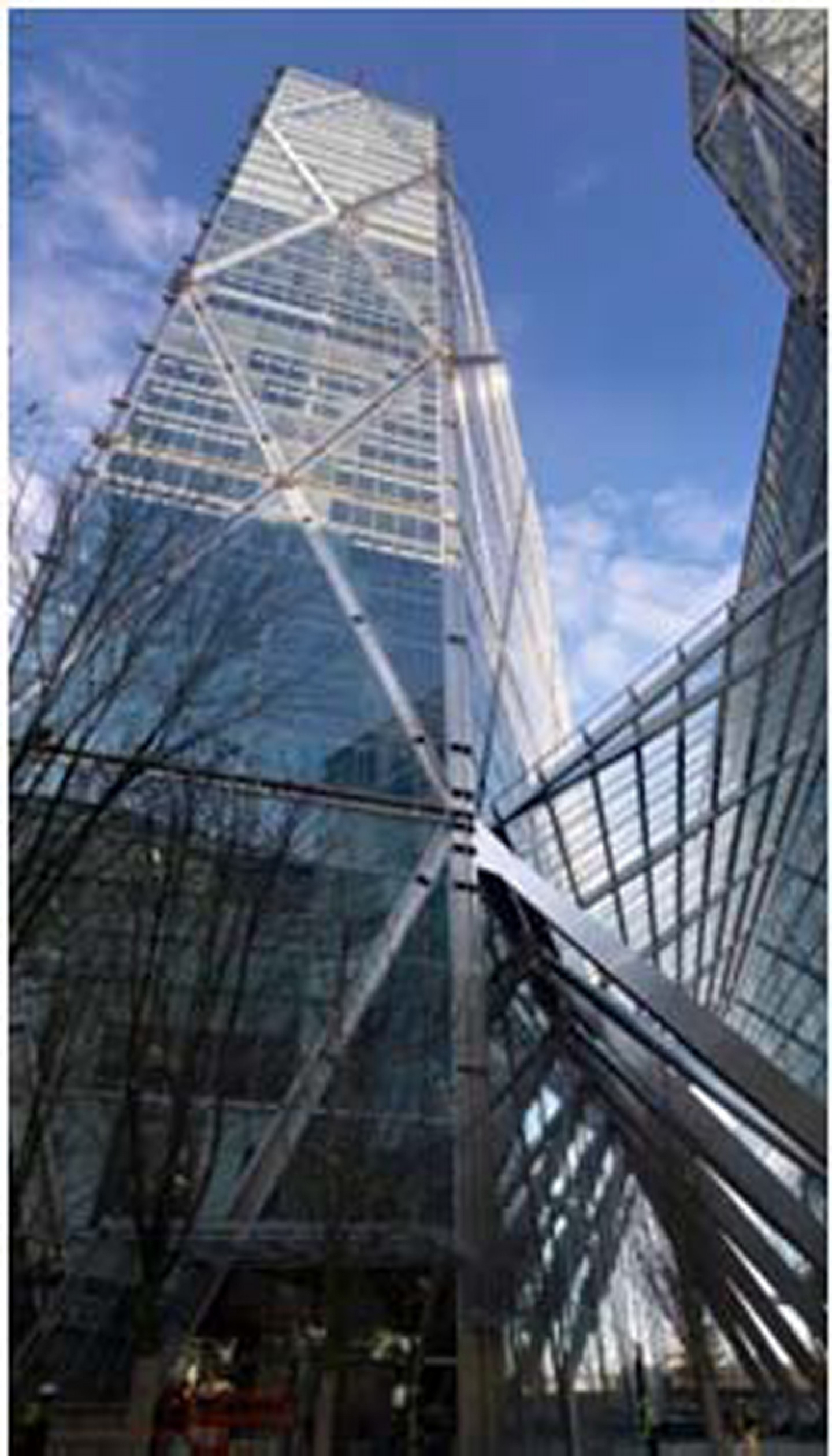The development utilises air-rights in the form of sitting on a large 6,000 tonne concrete and steel raft which straddles active rail lines and the entrance to Liverpool Street Station. The west side's foundations descend to ground level, whilst to the east the tower is supported by a 5-storey A-frame which performs the task of a flying buttress. As a result of the unusual design requirements it was important to keep the weight of the buildings as light as possible and one way of achieving this was to include Lytag® lightweight aggregate in the concrete mix for the floor slabs.
Both the Broadgate Tower and 201 Bishopsgate have been designed and specified to meet high environmental and sustainability targets, with 20% of the building (by value) comprising recycled material. The building is claimed to have achieved a BREEAM rating of “Excellent”. Lytag® LWA, (a wholly manufactured aggregate, made from a waste stream) will assist in meeting these requirements.
